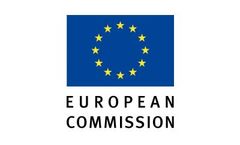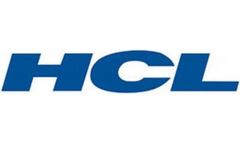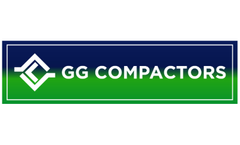waste electronic equipment Articles
-
Pre-shredders from Erdwich reduce up to eight tonnes of electrical and electronic scrap per hour using two drives, each with a power of 40,000 Nm
The handling of electrical appliances has changed drastically over the past 20 years: Nowadays, a defect appliance is replaced rather than repaired. According to United Nations' estimates, 40 million tonnes of electrical and electronic scrap is produced per year worldwide, which will be doubled by 2025. Valuable resources such as steel, nonferrous metals, plastic materials etc. can be recovered ...
-
Pre-shredders from Erdwich reduce efficient Electronic-scrap
The handling of electrical appliances has changed drastically over the past 20 years: Nowadays, a defect appliance is replaced rather than repaired. According to United Nations' estimates, 40 million tonnes of electrical and electronic scrap is produced per year worldwide, which will be doubled by 2025. Valuable resources such as steel, nonferrous metals, plastic materials etc. can be recovered ...
-
Transportation cost analysis of the Hellenic system for alternative management of Waste Electrical and Electronic Equipment
This work presents an ex post analysis of the reverse logistics system for the alternative management of WEEE (Waste Electrical and Electronic Equipment) in Greece, in view of the system's initiation in 2004. The aim was to predict how this system would provide guidelines concerning facility locations for WEEE collection and to calculate the transportation costs for WEEE management. A ...
-
EERA lambasts WEEE directive implementation
A new position paper from the European Electronics Recycling Association highlights what it perceives to be serious flaws in the implementation of the EU’s Directive on Waste Electrical and Electronic Equipment (WEEE). The organisation also puts forward its own blueprint for revising the ...
-
An information breakdown and discussion of opportunities from the WEEE Directive
The forthcoming EU Directive on Waste Electronic and Electrical Equipment will have far reaching effects throughout the supply chain. Important factors are discussed, such as the Directive's scope and policing, design and disassembly and potential market opportunities within and outside the existing supply chain.Keywords: WEEE, ROHS, environmental protection, materials selection, design for ...
-
A regulatory approach for e-waste management: a cross-national review of current practice and policy with an assessment and policy recommendation for the Indian perspective
This paper attempts to make an assessment and policy recommendation for the Indian perspective through a cross-national review of current practice and policy. It also addresses in a transition economy with some reference to policies and practices in other transition economies. It has been shown that existing Hazardous Waste Rules could overturn the necessity of a separate national legislation ...
-
An innovative model for WEEE recovery network management in accordance with the EU directives
An increased interest towards environmental respect amongst consumers, managers and researchers is registered, owing both to changing sensitivity and guidelines described in technical regulations. In this scenario, the European Union (EU) directives 2002/96/EC and 2003/108/EC, controlling the management of Wastes of Electric and Electronic Equipments (WEEE) are well-inserted. Companies producing ...
-
E-scrap regulations: calls for stronger enforcement
Demands for an enhanced producer responsibility system and on-going adaptation of the Directive on Waste Electrical and Electronic Equipment (WEEE) by EU member states provided the two main areas of discussion at the 2008 International Electronics Recycling Congress (IERC) in Salzburg, Austria. The congress was marked by a call for greater enforcement of regulations, increased collection rates ...
-
International regulations and treaties on electronic waste (e-waste)
Different policies are being developed worldwide to deal with electronic waste (e-waste) which is one of the fastest growing waste streams in modern society. European Union's Directives on Waste Electrical and Electronic Equipment (WEEE) and Restriction of Hazardous Substances (RoHS) are pioneers on the issue. Japan, China and Korea have implemented similar laws. In addition Japan, Canada and ...
-
E-scrap: metals too precious to ignore
Increased recovery of waste electrical and electronic equipment (WEEE) is providing the global recycling industry with fresh challenges. Researchers from Berlin’s University of Technology have been taking a close look at the material flowing into and out of the recycling process, paying special attention to the precious metals content. Their main conclusion is that conventional sorting ...
-
Environmental product attributes in end-of-life management in the UK. Part II: problems encountered with informational systems for the management of end-of-life IT and office equipment
The focus of this paper and its companion (Part I) is to identify producer responsibility associated with the proposed Waste from Electrical and Electronic Equipment (WEEE) Directive and the need for greater information about the environmental attributes of electrical and electronic equipment to facilitate end-of-life management of discarded products. Part II Data were gathered from a series of ...
-
Tradable Certificates for Recycling of Waste Electrical and Electronic Equipment (WEEE)
Untitled Document Executive Summary The Study This study analyses options for the design of tradeable certificate systems to finance the recovery of waste electrical and electronic equipment (WEEE). The study focuses on the option of an EU wide system although the concept can also be applied on a national or industry-led (environmental agreement) basis. Tradeable Certificates ...
-
SAP Recycling Administration (REA)
Recycling Management is growing ever more demanding. Legal requirements, coupled with an increasing awareness of the environment, have confronted modern enterprises with a completely new challenge. In Europe, packaging waste, disposed batteries and the Waste Electrical and Electronic Equipment (WEEE) directives requires manufacturers for the correct disposal and recycling of their waste products. ...
-
Environmental product attributes in end-of-life management in the UK. Part I: an end-of-life eco-declaration for waste IT and office equipment
The focus of this paper and its companion (Part II) is to identify producer responsibility associated with the proposed Waste from Electrical and Electronic Equipment (WEEE) Directive and the need for greater information about the environmental attributes of electrical and electronic equipment to facilitate end-of-life management of discarded products. Recently, a wide-ranging debate has started ...
-
Eco-efficiency as a road-mapping instrument for WEEE implementation
A comprehensive and quantitative eco-efficiency concept for end-of-life consumer electronics is developed at the TU Delft. It addresses the key question in setting up take-back systems for discarded consumer electronics: how much environmental improvement can be realised per amount of money invested? This paper highlights the latest results of applying the concept in practice on the ...
-
Modelling and planning of Product Recovery Network: the case study of end-of-life refrigerators in Italy
The paper proposes an analytical model for the design and planning of Product Recovery Networks. The model has been validated through the analysis and implementation of a PRN for end-of-life refrigerators in the northern regions of Italy. The scope of the analysis is to evaluate the capacity and cost of the existing network, as well as its possible development in the near future to fulfil the ...
-
Facility location planning for treatment of large household appliances in Spain
A two-step approach is presented for strategic planning of recycling systems for discarded electronic products. In a first step, the appropriateness of municipalities for the installation of recycling facilities is evaluated based on economic, infrastructural, and legal location criteria applying a Multi-Attribute Decision-Making procedure (PROMETHEE). In a second step, interdependencies of ...
-
Thermal Plasma Technology Supports Precious Metal Recovery from WEEE
The article provides an overview of the history of electrical wastes, where we are today and the potential value that can be generated from recovering the valuable precious metals it contains going forward. The article also discusses how Tetronics’ patented DC Plasma technology has been successfully employed in a wide range of environmental applications including Precious Metal Recovery ...
-
Recycling Giants
A staggering clue to the amount of electronic and electrical waste on the planet now is creatively shown by the amazing Sculpture of WEEEman at the Eden Project. The Eden Project WEEEman was made from the Waste Electrical and Electronic Equipment that an average British person threw away in their lifetime – over 3 tonnes per person. At seven metres high, his grimacing head towered over ...
-
An empirical study of the implementation of green supply chain management practices in the electrical and electronic industry and their relation to organizational performances
This study aims to investigate the green supply chain management practices likely to be adopted by the electrical and electronic industry in Taiwan, which is dominated by Original Equipment Manufacturing and Original Designing and Manufacturing manufacturers, after the European Union implementation of the Restriction of Hazardous Substances and Waste Electrical and Electronic Equipment ...
Need help finding the right suppliers? Try XPRT Sourcing. Let the XPRTs do the work for you


